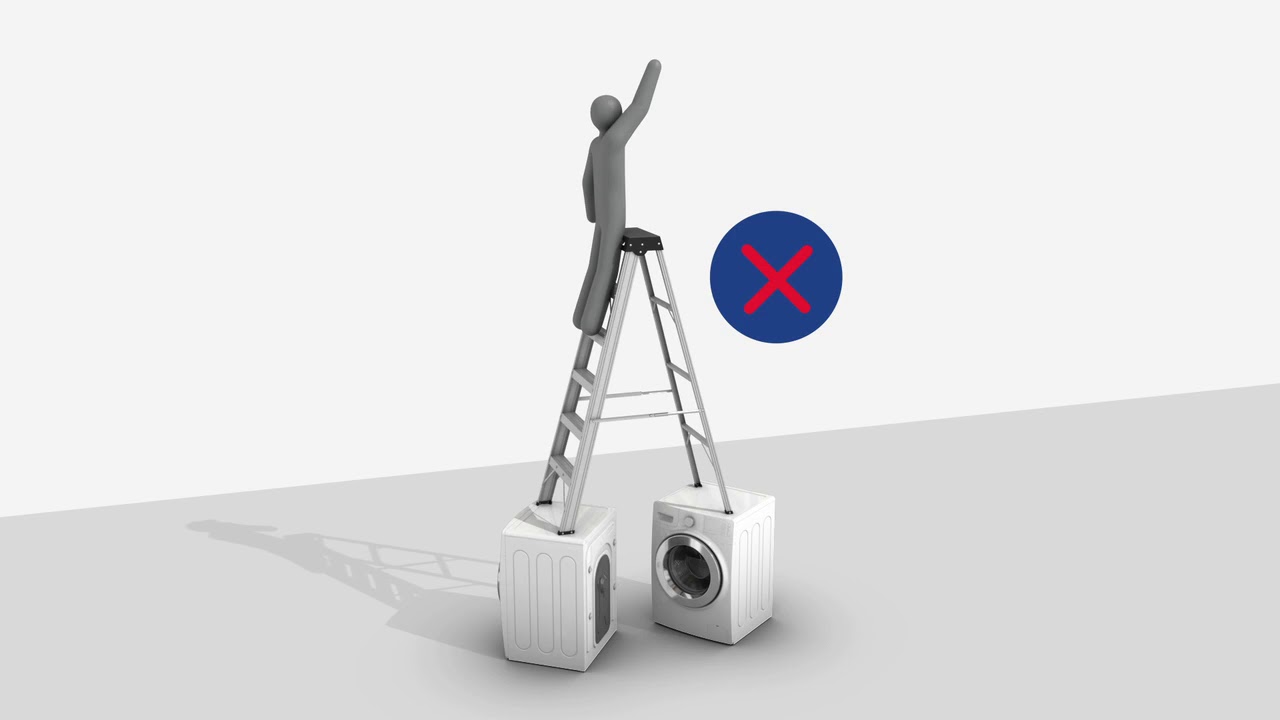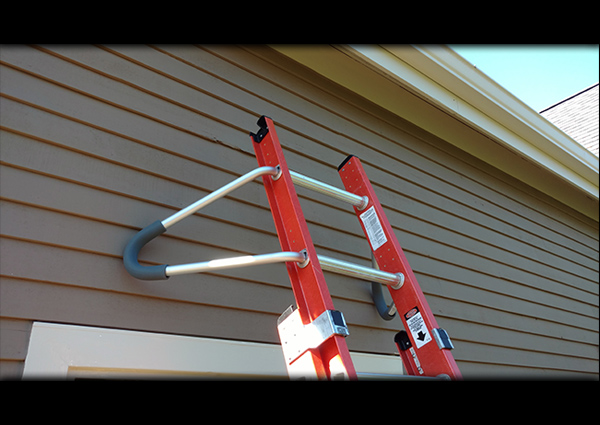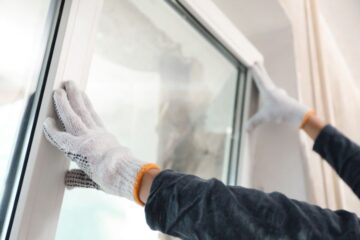Safe use of ladders

Working from a ladder might be risky. Even a fall from an 8-foot stepladder can land you in a cast for a few months. Here are some helpful hints for working safely on a ladder:
Use an extension ladder that is the right size for the job: it should stretch all the way to the top of your house’s highest wall. If it isn’t long enough, rent one that is.
Use a ladder stabilizer:

img: levelok.com
Install it at the top of the ladder’s upper part. It’s cheap and makes a tremendous difference in an extension ladder’s safety.
Check that the ladder’s legs are on level ground; if they aren’t, wedging a thin piece of scrap wood under one of the legs will stabilize it. Install a 24 (on the downhill side) that extends 12″ past the side of each leg on sloping ground. Wood stakes are used to keep the 24 in place.
Obtain assistance in lifting an extension ladder by keeping the pieces connected and laying the ladder perpendicular to the house on the ground. Allow your assistant to stand at the bottom of the ladder, one foot next to each leg, and his back to the house. Then, lift the ladder’s top end and begin walking toward the bottom, pushing it up as you go. Once the ladder is erect, have your assistant balance it while you pull the extension ladder rope to the proper height. Carefully lean it against the house’s side.
If at all possible, avoid using a ladder: The best ladder safety recommendation is to avoid using a ladder altogether. Hire a professional painter or rent scaffolding to utilize as a more sturdy work surface if you are uncomfortable standing on one. Scaffolding is priced differently depending on whether you pick it up or have it delivered, whether they assemble it for you or not, and how long you need it. The lower the price per day, the longer you retain it.



